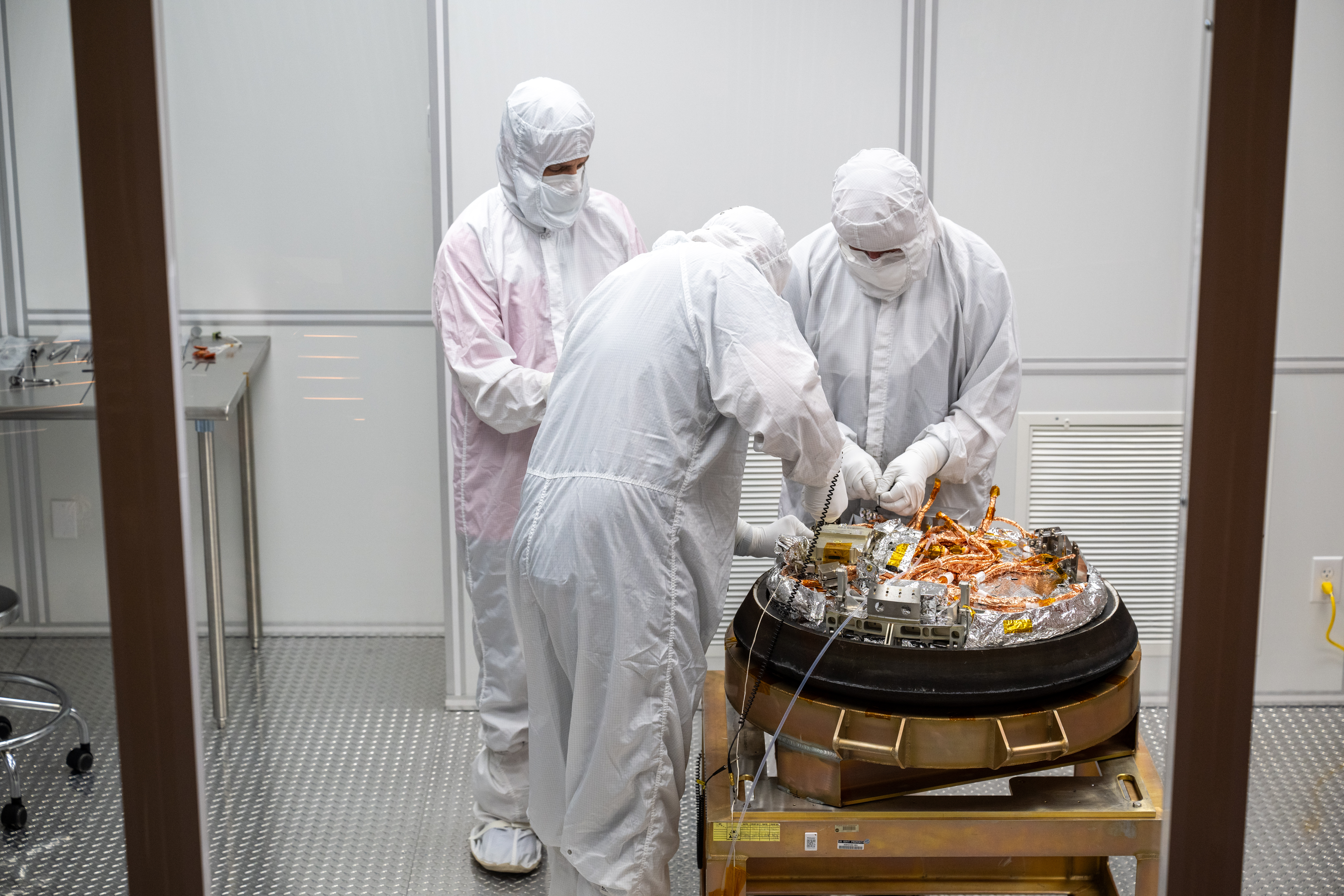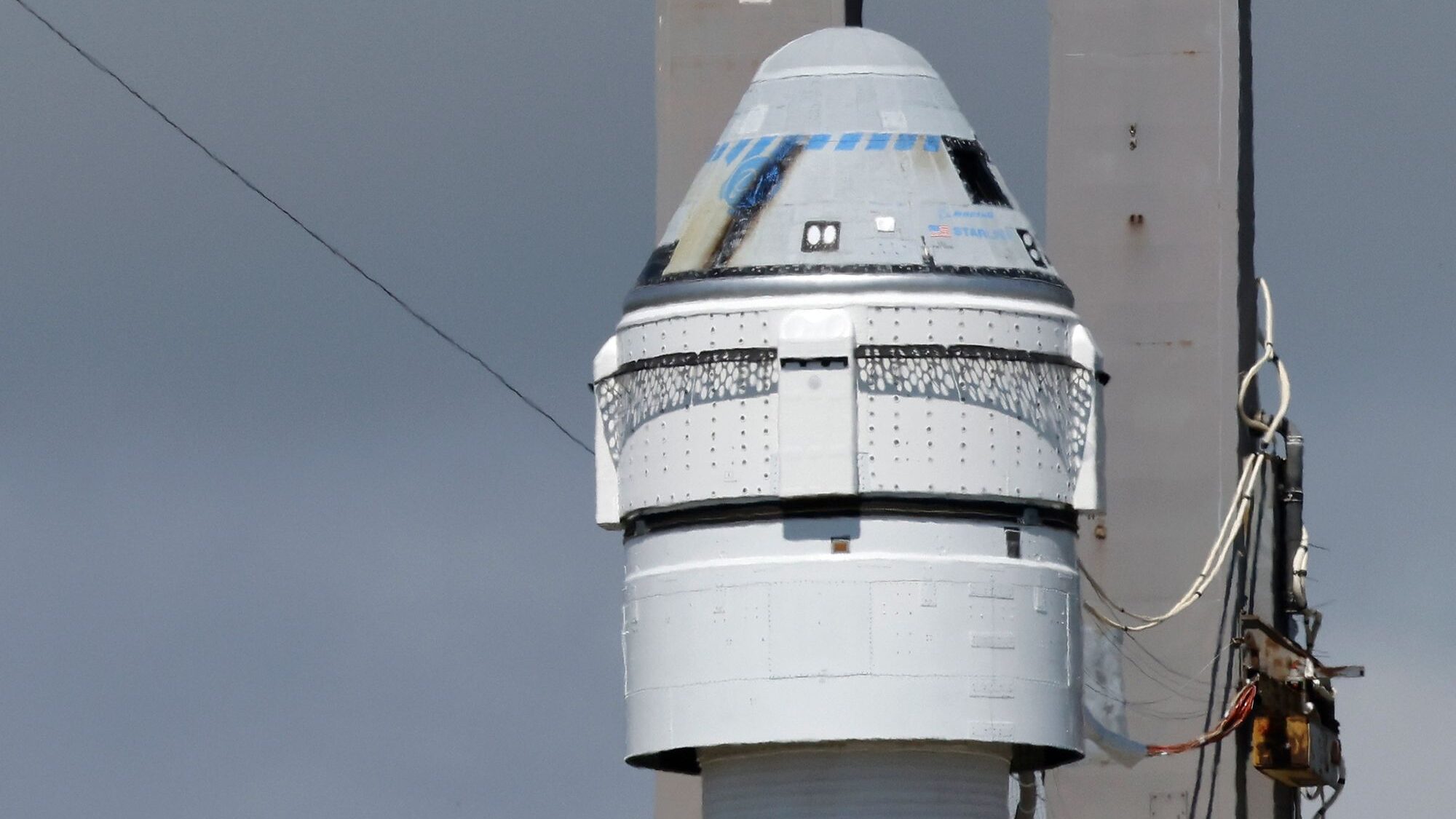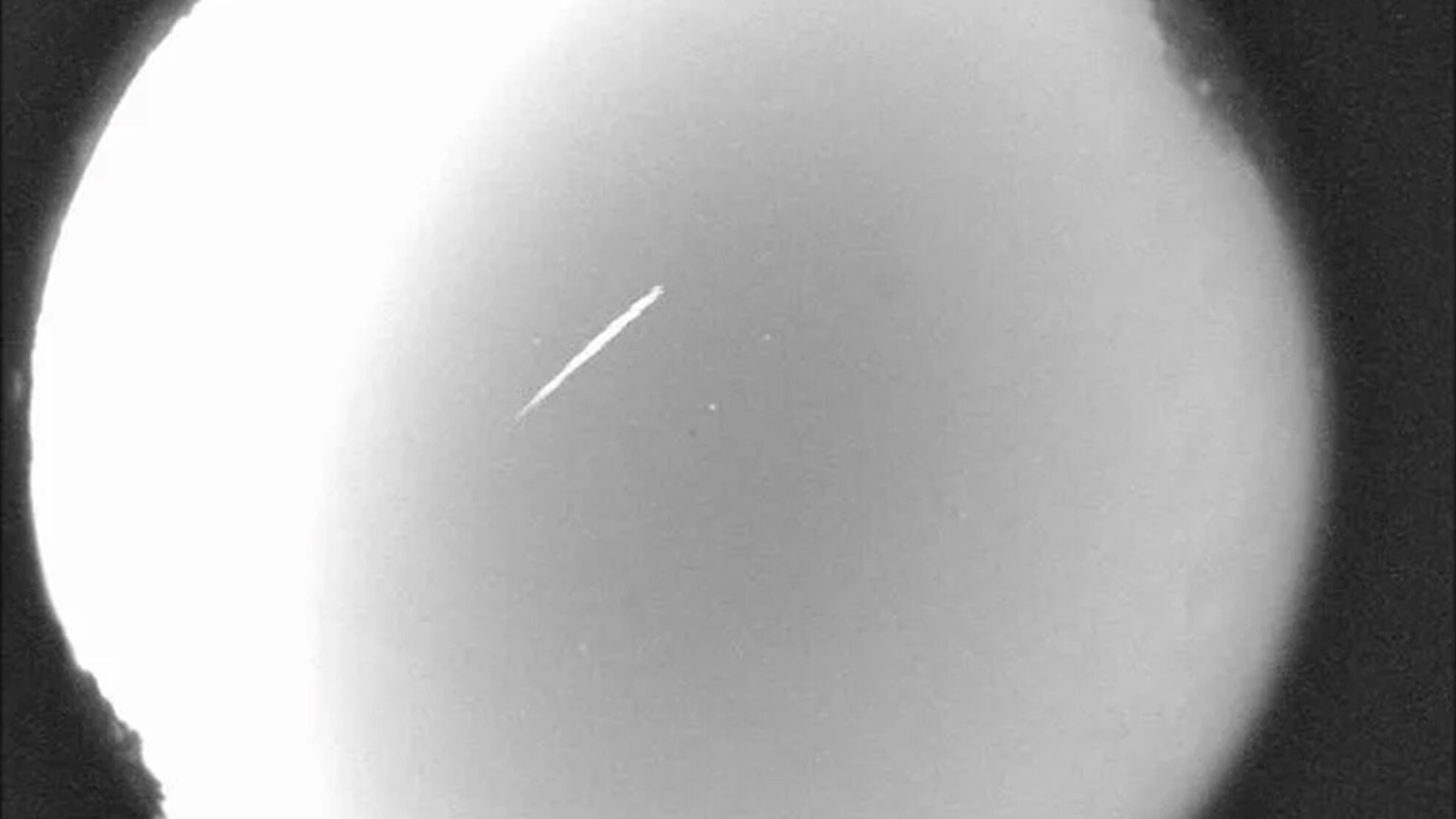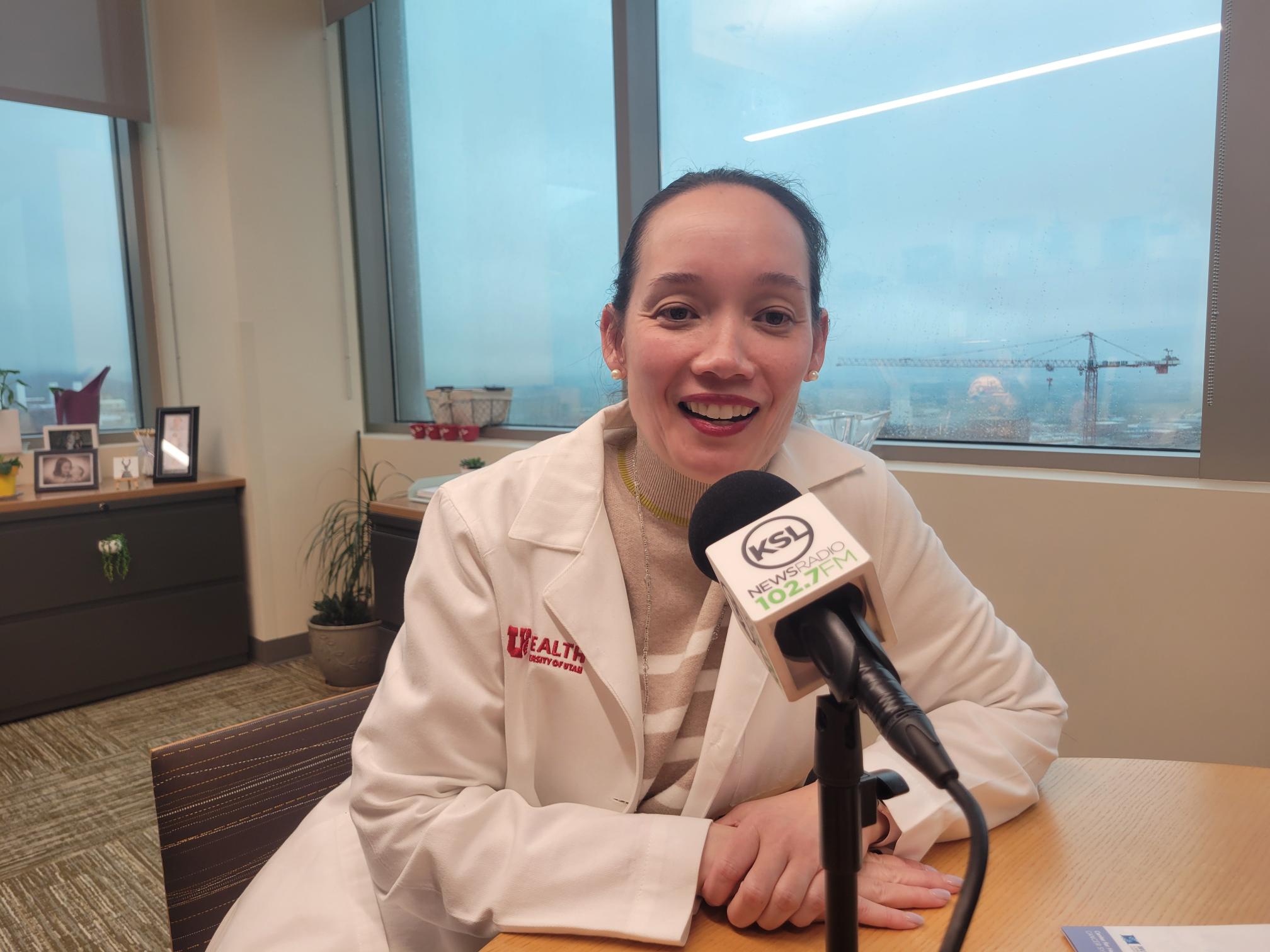NASA reveals first glimpse inside capsule that landed in Utah
Oct 11, 2023, 3:00 PM

Curation teams process the sample return capsule from NASA’s OSIRIS-REx mission in a cleanroom, Sunday, Sept. 24, 2023, at the Department of Defense's Utah Test and Training Range. The sample was collected from the asteroid Bennu in October 2020 by NASA’s OSIRIS-REx spacecraft. (NASA/Keegan Barber)
(NASA/Keegan Barber)
SALT LAKE CITY — Just over two weeks from its long-awaited arrival back on Earth, NASA gave the public a look inside the capsule from OSIRIS-REx. It contains the United States’ first-ever physical asteroid sample.
OSIRIS-REx is a spacecraft launched in 2016. Its name stands for “Origins, Spectral Interpretation, Resource Identification, and Security – Regolith Explorer.”
It went on a 7-year mission to map and obtain material from Bennu, a 4.5-billion-year-old asteroid. The vessel landed on Bennu’s surface and retrieved a sample in 2020.
On Sept. 24 of this year, OSIRIS-REx released a return capsule. That capsule landed in Utah’s West Desert near the U.S. Army Dugway Proving Ground early that morning.
Live on NASA TV Wednesday, scientists at the Johnson Space Center in Houston revealed the capsule still isn’t fully open.
The whole mission of retrieving and studying the sample has been a meticulous battle against the elements of Earth. To preserve the sample’s celestial integrity, scientists cannot let anything, even the air we breathe, contaminate it.
Once it landed in Dugway, NASA carefully transported the return capsule to a temporary clean room and put it under a constant nitrogen flow. It was then transported to the Johnson Space Center in Houston.
The sample has found its permanent home there, where scientists can fully open the capsule in a clean space and work with it through gloves connected to the container it’s in.

Lockheed Martin Recovery Specialist Levi Hanish, left, and Lockheed Martin Recovery Specialist Michael Kaye, right, transfer the sample return capsule from NASA’s OSIRIS-REx mission to a cradle, Sunday, Sept. 24, 2023, shortly after the capsule landed at the Department of Defense’s Utah Test and Training Range. The sample was collected from the asteroid Bennu in October 2020 by NASA’s OSIRIS-REx spacecraft. Photo Credit: (NASA/Keegan Barber)
What’s inside the capsule?
The goal of the OSIRIS-REx mission was to obtain 60 grams of material from asteroid Bennu. While the capsule hasn’t fully been opened, scientists did find a large amount of dark-gray dust and rock-like material inside.
Scientists estimate there are 250 grams, or about six times the goal weight deeper inside the canister.
“This is the biggest carbon-rich asteroid sample ever returned to Earth,” said NASA Administrator Bill Nelson.
Scientists, including Dr. Dante Lauretta, the principal investigator of OSIRIS-REx and professor at the University of Arizona, said the capsule contained not only carbon but water-rich clay minerals, which is exactly what they were looking for.
“They have water locked inside their crystal structure,” Lauretta said. “That water…that is how we think water got to the Earth…the reason that Earth is a habitable world.”
Scientists think an asteroid, like Bennu, brought the essential materials — water, carbon, DNA, RNA, etc — to Earth over 4 billion years ago. The material obtained from Bennu is about as old as our solar system.
What happens next?
There’s no telling yet how long it’ll take to open the capsule, which is still under nitrogen flow in Houston. However, Dr. Nicole Lunning, the lead OSIRIS-REx sample curator said they hope to have three bits of the sample in different U.S. museums within the next couple of months. One at the Smithsonian in New York, one at the University of Arizona and one at the Johnson Space Center Museum.
Lunning also estimates scientists will be able to start applying to study pieces of the sample in six months, a process that will take place for decades to come.
“This material will be around for generations and generations,” said Dr. Daniel Glavin, with NASA’s Goddard Space Flight Center. “We’re going to learn so much about the origin of the solar system…and potentially how even life started here on Earth.”













